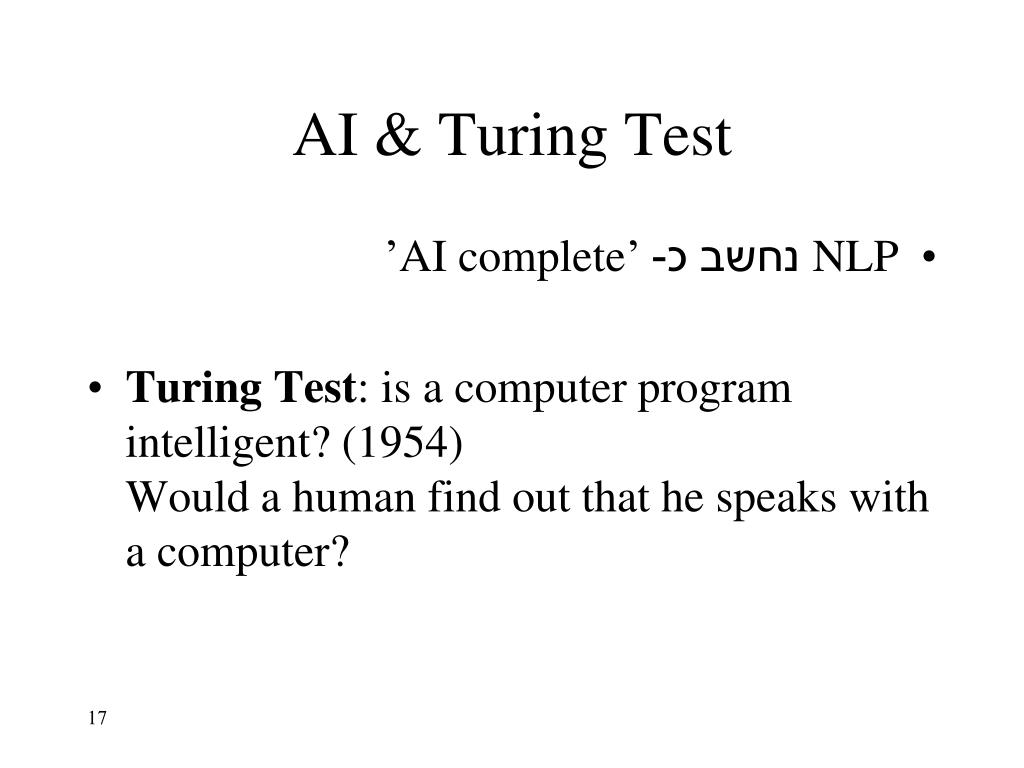

The Lovelace test will be presented as well, as possible alternative to Turing Test, and some considerations on its scope and effectiveness will be made. ) some of the main exceptions or oppositions to the Turing test ability to detect “intelligent machines” will be presented.

In this work first of all a description of classical Turing test will be done. The main problem related to the execution in Turing test is substantially dealing with the trouble in identification of a human-like intelligence based on a pure evaluation of external behavior of a machine. In this paper a possible extension of Turing test will be presented, which is intended to overcome the limits highlighted by several researchers and scientists in the last seventy years. Freeman and Company, ISBN 0-7167-0463-3 Robert Epstein, Gary Roberts, Grace Beber (eds.) (2008), Parsing the Turing Test: Philosophical and Methodological Issues in the Quest for the Thinking Computer Searle 1980 Weizenbaum, Joseph (1976), Computer power and human reason: from judgment to calculation, W. McCorduck, Pamela (2004), Machines Who Think (2nd ed.), Natick, MA: A. Turing 1950 Weizenbaum, Joseph (January 1966), "ELIZA-A Computer Program For the Study of Natural Language Communication Between Man And Machine", Communications of the ACM 9 (1): 36–45. To date, no computer has passed the Test reliably and often. Turing's point is that were a computer to successfully and repeatedly pass such a test, we should then regard the computer as intelligent on the human level. The computer wins if the judge cannot tell which conversant is the human and which is the computer. The point of the game is for the computer to converse in such a human-like way with the judge that the judge cannot tell the second human from the computer (in usual renditions of the Test, the second human also tries to convince the judge that he or she is the human, so the test becomes a contest). In 1950, Alan Turing published "Computing Machinery and Intelligence" where he described a game he called the "imitation game" involving a human judge conversing only in written text with a second human and a language-using computer, each hidden away in separate rooms (3 rooms total). The Turing test is a test for intelligence in machines.


 0 kommentar(er)
0 kommentar(er)
